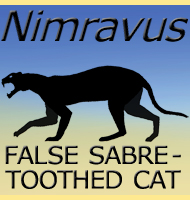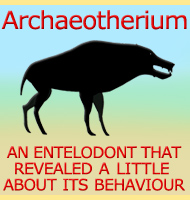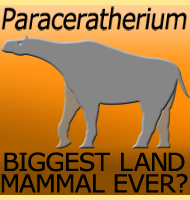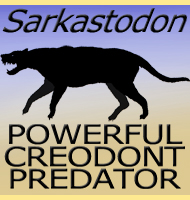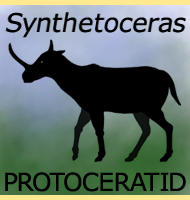


Paradaphoenus
Name:
Paradaphoenus
(Near Daphoenus).
Phonetic: Pa-rah-do-foe-nus.
Named By: Wortman and Matthew - 1899.
Synonyms: Amphicyon entoptychi.
Classification: Chordata, Mammalia, Carnivora,
Caniformia, Amphicyonidae, Daphoeninae?
Species: P. cuspigerus, P. minimus,
P. tooheyi.
Diet: Carnivore.
Size: Weight estimated at around 1.9 kilograms.
Known locations: USA - Oregon, Nebraska,
South Dakota.
Time period: Rupelian of the Oligocene through to
the Burdigalian of the Miocene.
Fossil representation: Several specimens.
Paradaphoenus
acquired its name from its superficial similarity to another bear
dog
called Daphoenus.
Depending upon the palaeontologist, Paradaphoenus
has been assigned a more general position within the Amphicyonidae,
as well as a more precise classification within the Daphoeninae, the
group named after Daphoenus.
At
almost two kilos Paradaphoenus was one of the
smaller bear dogs and
initially lived in North America at a time when the top predators were
creodont mammals like Hyaenodon
horridus. Continuing climatic changes
in the Miocene as well as the arrival of truly large bear dogs like
Amphicyon
would signal the end of the creodonts as top predators.
Throughout this time Paradaphoenus would have
continued to be near the
bottom of the food chain where it probably focused its attentions upon
hunting smaller mammals as well as probably scavenging the leftovers of
the kills of larger predators.
Further reading
- On some of the characters of the Miocene fauna of Oregon. -
Proceedings of the American Philosophical Society 18(102):63-78. - E.
D. Cope - 1878.
- The ancestry of certain members of the Canidae, the Viverridae, and
Procyonidae. - Bulletin of the American Museum of Natural History
12(6):109-138. - J. L. Wortman & W. D. Matthew - 1899.
- Small Oligocene amphicyonids from North America (Paradaphoenus,
Mammalia, Carnivora). - American Museum Novitates 3331:1-20. - R. M.
Hunt Jr. - 2001.
----------------------------------------------------------------------------
Random favourites
 |
 |
 |
